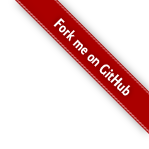 I’ve previously documented how I’ve previously used Known to track system events generated by various pieces of hardware and various processes within my (and my client) infrastructure.
I’ve previously documented how I’ve previously used Known to track system events generated by various pieces of hardware and various processes within my (and my client) infrastructure.
Like many, I use a UPS to keep my servers from uncontrolled shutdowns, and potential data loss, during the thankfully rare (but still more common than I’d like) power outages.
Both my UPS’ are made by APC, and are monitored by a small demon called apcupsd. This demon monitors the UPS and will report on its status, from obvious things like “lost power” and “power returned”, but also potentially more important things like “battery needs replacing”.
While some events do trigger an email, other messages are written to the console using the wall command, so are less useful on headless systems. Thankfully, modifying the script is fairly straightforward.
Setting up your script
First, set your script as you did for nagios. Create an account from within your Known install, and then grab its API key, then put it in a wrapping script.
#!/bin/bash
PATH=/path/to/BashKnown:"${PATH}"
status.sh https://my.status.server apc *YOURAPICODE* >/dev/null
exit 0
I need to Pee
The next step is to modify /etc/apccontrol to call your wrapper script.
I wanted to maintain the existing ‘post to wall’ functionality as well as posting to my status page. To do this, you need to replace the definition for WALL at the top of the script, and split the pipe between two executables.
To do this you need a command called pee, which is the pipe version of tee, and is available in the moreutils package on debian based systems. So, apt-get install moreutils.
Change:
WALL=wall
To:
WALL="pee 'wall' '/path/to/wrapperscript.sh'"
Testing
To test, you can run apccontrol directly, although obviously you should be careful which command you run, as some commands fire other scripts.
I tested by firing:
./apccontrol commfailure
Happy hacking!

